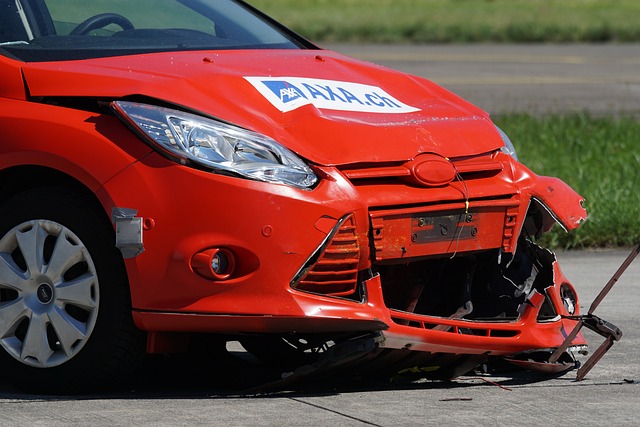SR-22 insurance is mandatory in the US for pilots and aircraft owners, acting as proof of financial responsibility to cover damages or losses from accidents. Understanding the required minimum coverage levels and protection types is crucial for legal compliance and risk mitigation. This specialized aviation insurance provides peace of mind by covering medical expenses, property damage, and legal fees, while simplifying claims processes. Choosing the right provider with tailored policies and good claims handling is key; policyholders should also be aware of exclusions and limitations. Maintaining continuous coverage is vital to avoid penalties and protect assets, emphasizing SR-22's significance for aviation safety and financial security.
“Navigating the world of aviation requires understanding specific insurance requirements, especially when operating a small aircraft. This article delves into the intricacies of SR-22 Insurance, a crucial coverage for pilots and aircraft owners. We explore key aspects, including the purpose of this insurance, its benefits, target demographics, and selection criteria for providers. By understanding SR-22 Insurance nuances, you’ll be equipped to make informed decisions, ensuring compliance and peace of mind.”
Understanding SR-22 Insurance Requirements

Understanding SR-22 Insurance Requirements
SR-22 Insurance is a specific type of financial security required by law for pilots and aviation enthusiasts. It serves as proof of financial responsibility, ensuring that individuals who operate aircraft are capable of covering potential damages or losses. This insurance is especially crucial for those involved in commercial flying or certain types of aviation activities. The main purpose of SR-22 Insurance is to protect both the pilot and the airline company from significant financial risks associated with accidents or incidents.
Knowing the SR-22 Insurance requirements is essential for anyone seeking to operate aircraft legally. These regulations dictate the minimum coverage levels and specific types of protection needed, ensuring that pilots are adequately insured. Understanding these mandates is the first step in ensuring compliance and safeguarding against potential legal and financial consequences.
Key Benefits of Professional SR-22 Coverage

Professional SR-22 coverage offers a multitude of benefits for individuals and businesses alike, ensuring comprehensive protection in case of unforeseen events related to aviation. One of the primary advantages is its ability to shield against financial burdens associated with legal liabilities arising from aircraft accidents or damage. This type of insurance provides peace of mind by covering costs such as medical expenses, property damage, and even legal fees, offering a safety net that can be invaluable in stressful situations.
Additionally, professional SR-22 coverage streamlines the claims process, making it more efficient and less complex for policyholders. It also ensures compliance with aviation regulatory requirements, which is crucial for operators to avoid penalties and maintain operational integrity. The protection extends beyond financial aspects, offering peace of mind that all stakeholders are secured against potential risks, fostering a safer aviation environment.
Who Needs SR-22 Insurance?

Many individuals and businesses operating aircraft require SR-22 insurance, but it’s not just for pilots and plane owners. Anyone who flies an aircraft, whether for personal or commercial purposes, needs to understand the importance of this specific coverage. It is mandated by law in many jurisdictions as a minimum requirement for aviation liability insurance.
SR-22 insurance protects against financial loss resulting from accidents involving your aircraft. This includes damage to the aircraft itself and potential injuries or fatalities of passengers and individuals on the ground. It ensures that you are financially accountable and provides a safety net, safeguarding your assets and offering peace of mind while navigating the complexities of aviation risk management.
Choosing the Right SR-22 Insurance Provider

Choosing the right SR-22 insurance provider is a crucial step in ensuring compliance with aviation regulations and safeguarding your financial interests. Not all insurance companies offer specialized SR-22 coverage, so it’s essential to find a provider that has extensive experience insuring these types of aircraft. Look for carriers that understand the unique risks associated with flying an SR-22 and can provide tailored policies that meet your specific needs.
When evaluating potential providers, consider factors like policy flexibility, claims handling, customer service, and pricing. Compare quotes from multiple insurers to find the best balance between coverage and cost. Additionally, check reviews and ratings from other aviation professionals to gauge their satisfaction with the provider’s services. Making an informed decision will help ensure you have reliable SR-22 insurance in place.
The Claims Process for SR-22 Policies

When it comes to SR-22 insurance, the claims process is straightforward yet crucial for ensuring uninterrupted coverage. The moment an incident occurs, policyholders should promptly report it to their insurance provider. This typically involves filing a claim online or over the phone, providing essential details about the event, and gathering necessary documentation.
During the claims investigation, the insurer will assess the damage or loss, verify the validity of the claim, and determine liability. Successful claims are then settled, either by repair or replacement, up to the limits specified in the SR-22 policy. Understanding this process is vital for policyholders, as it guarantees that their coverage remains active, safeguarding them from potential penalties or lapses in insurance due to unforeseen circumstances.
Common Exclusions and Limitations

When it comes to SR-22 insurance, understanding common exclusions and limitations is crucial for policyholders. These policies are designed to meet specific requirements set by lenders or legal entities, ensuring individuals maintain valid auto insurance after a license suspension or other issues. However, not all risks are covered. Common exclusions include high-risk driving behaviors such as drunk driving or reckless operation, which may lead to increased premiums or denials of coverage.
Additionally, pre-existing damage or losses, acts of nature like floods or earthquakes, and certain types of vehicle modifications or alterations can be excluded from SR-22 Insurance policies. It’s important for policyholders to review their contracts carefully, as these limitations vary among providers. Understanding these exclusions empowers individuals to make informed decisions when choosing a suitable insurance plan, ensuring they are protected within the boundaries set by their SR-22 coverage.
How SR-22 Insurance Impacts Your Costs

SR-22 insurance is mandated by law for drivers who have been involved in significant at-fault accidents or have certain traffic violations. This specialized coverage plays a crucial role in ensuring financial protection for victims of such incidents. The primary impact on costs is twofold. Firstly, individuals requiring SR-22 often face higher premiums due to the increased risk associated with their driving history. This risk is reflected in the insurance rates, making it more expensive to secure coverage compared to standard policies. Secondly, the duration of this special insurance need can extend beyond traditional periods, leading to prolonged financial commitment. The cost implications are significant, particularly for those who find themselves mandatorily bound to SR-22 for an extended period.
Tips for Maintaining Continuous SR-22 Coverage

Maintaining continuous SR-22 coverage is essential for aviation enthusiasts and professionals alike. Firstly, ensure that your insurance provider offers SR-22 policies tailored to meet the specific needs of aircraft owners. Regularly review your policy terms and conditions to understand the scope of coverage, deductibles, and any exclusions. Staying proactive in managing your policy helps avoid unexpected gaps in coverage.
Additionally, keep your personal and aviation information up-to-date with your insurance company. Changes in ownership, flight hours, or aircraft specifications should be promptly reported. Regular communication with your insurer fosters a strong relationship, enabling you to address any potential issues before they disrupt your SR-22 coverage.
Frequently Asked Questions (FAQs) About SR-22 Insurance

Frequently Asked Questions (FAQs) About SR-22 Insurance
What is SR-22 insurance? SR-22 insurance is proof of financial responsibility for pilots and aircraft owners. It’s mandated by the Federal Aviation Administration (FAA) in the United States, ensuring that aviation users can cover potential damages or accidents. This type of coverage is often required when licensing or registering an aircraft.
Why is it important? SR-22 insurance protects both the policyholder and third parties. It ensures that medical expenses and property damage costs are covered in case of an aviation accident. For aircraft owners, it’s not just a legal requirement but also a way to safeguard their assets and ensure peace of mind while flying or operating an airplane.
